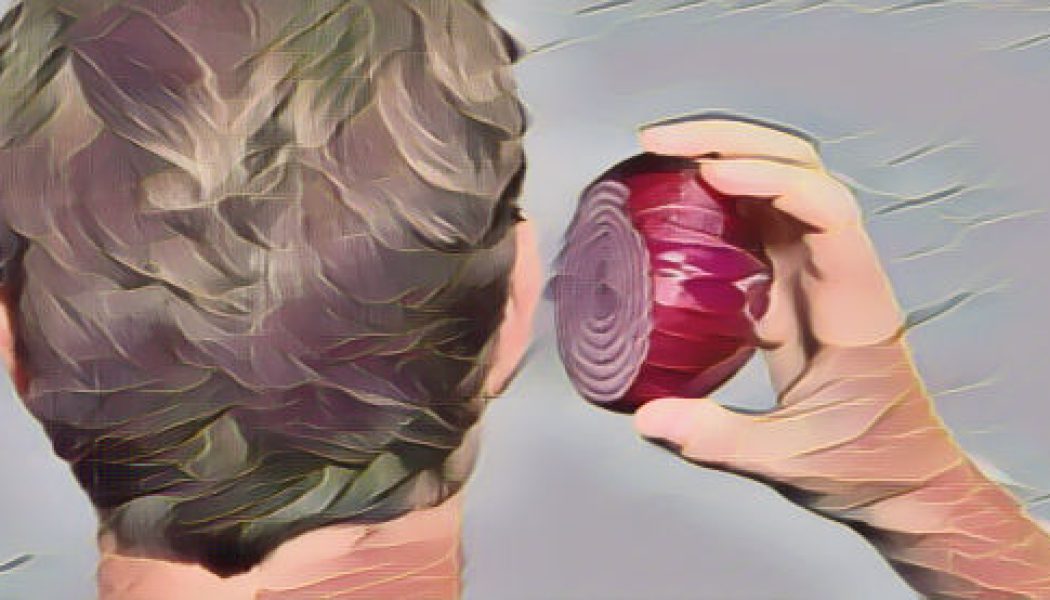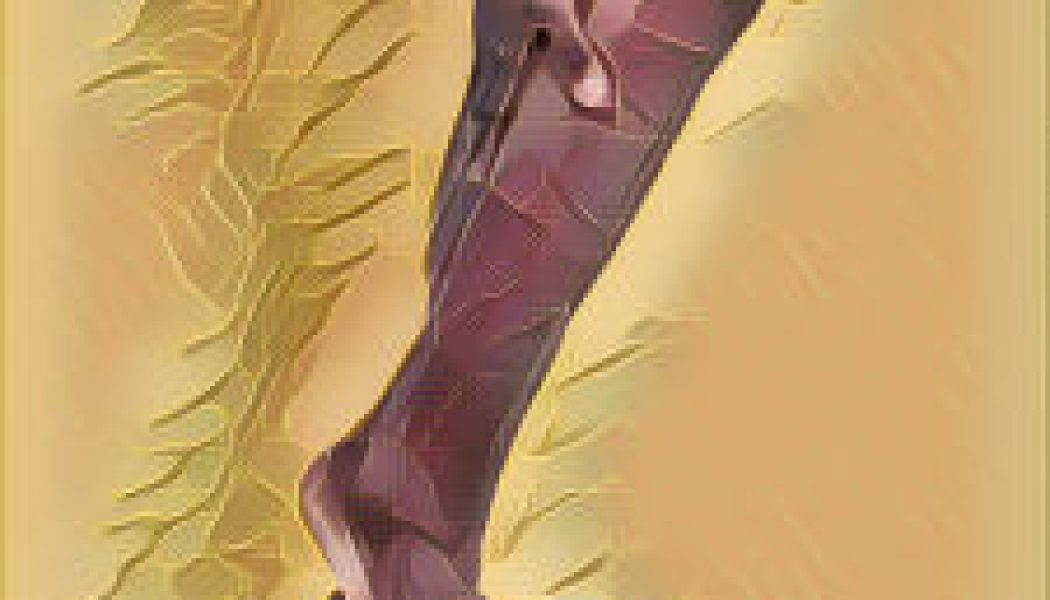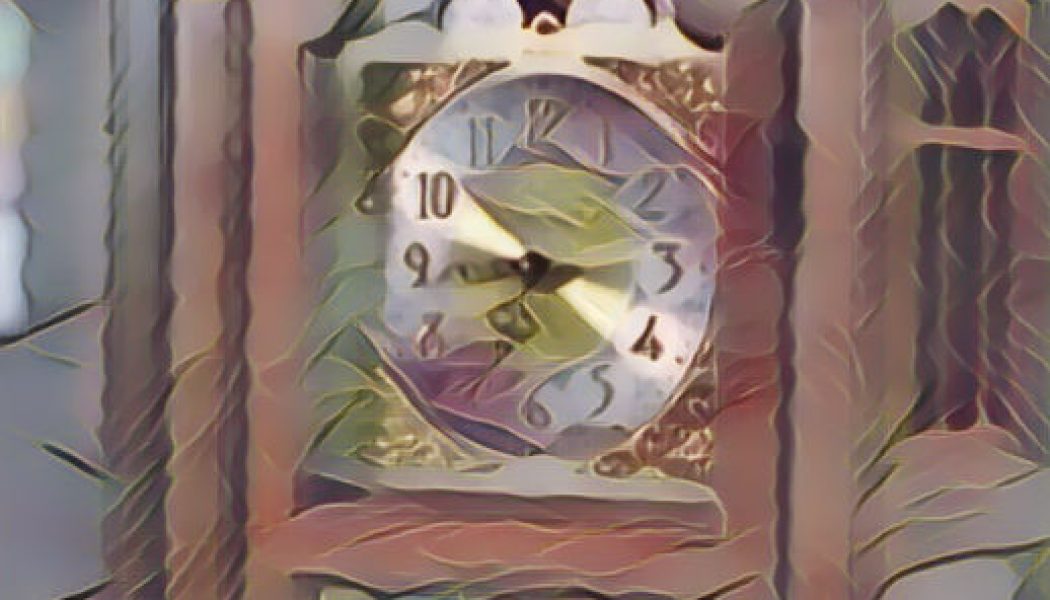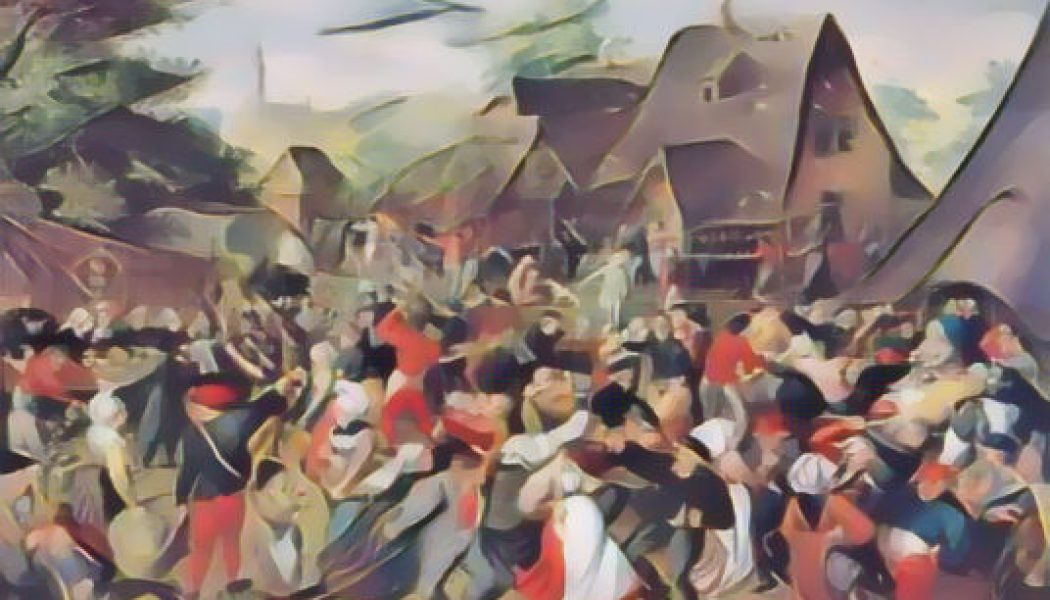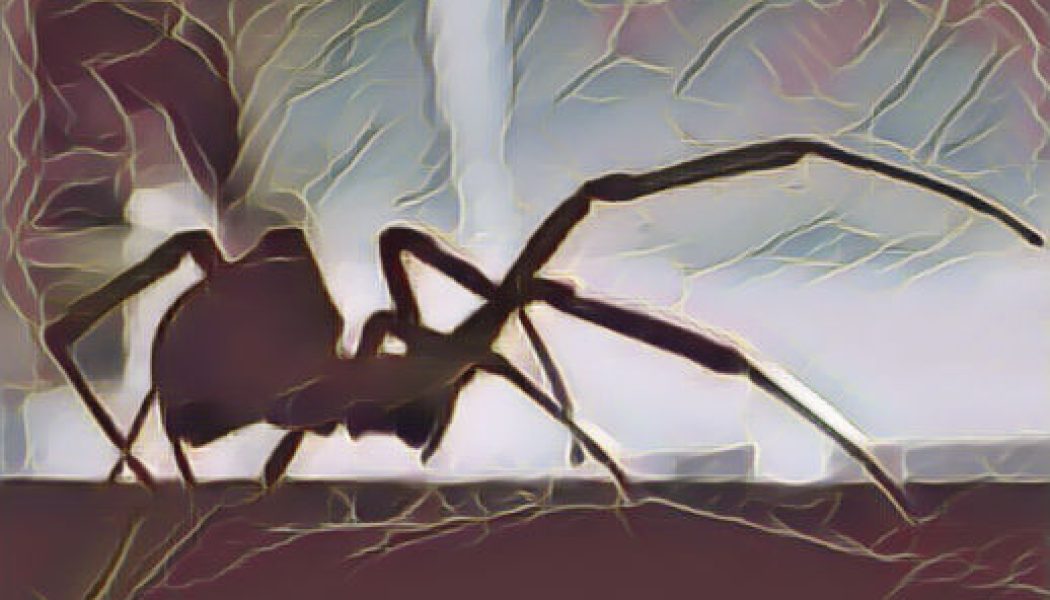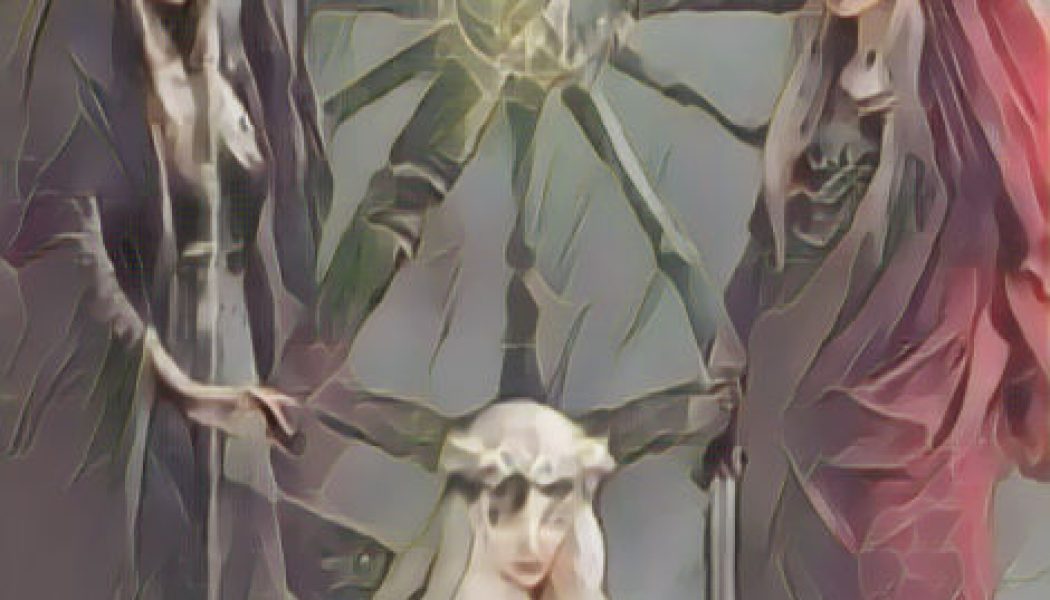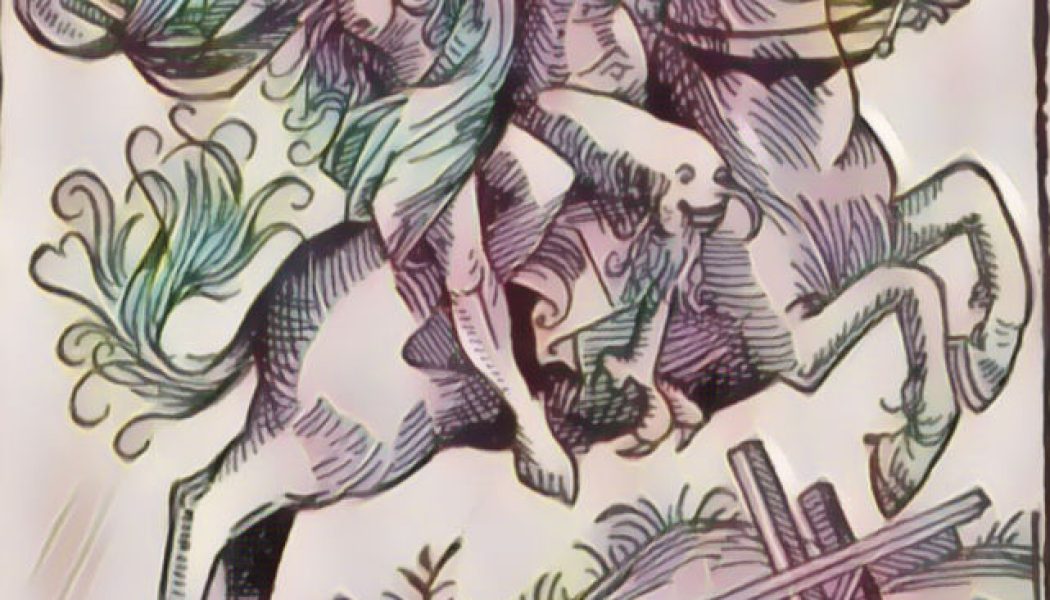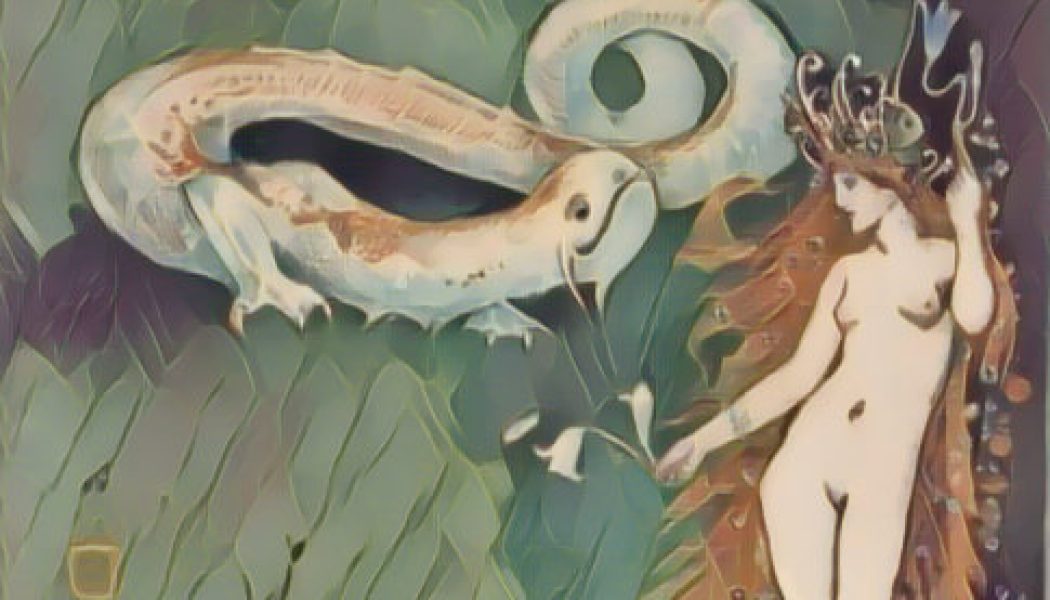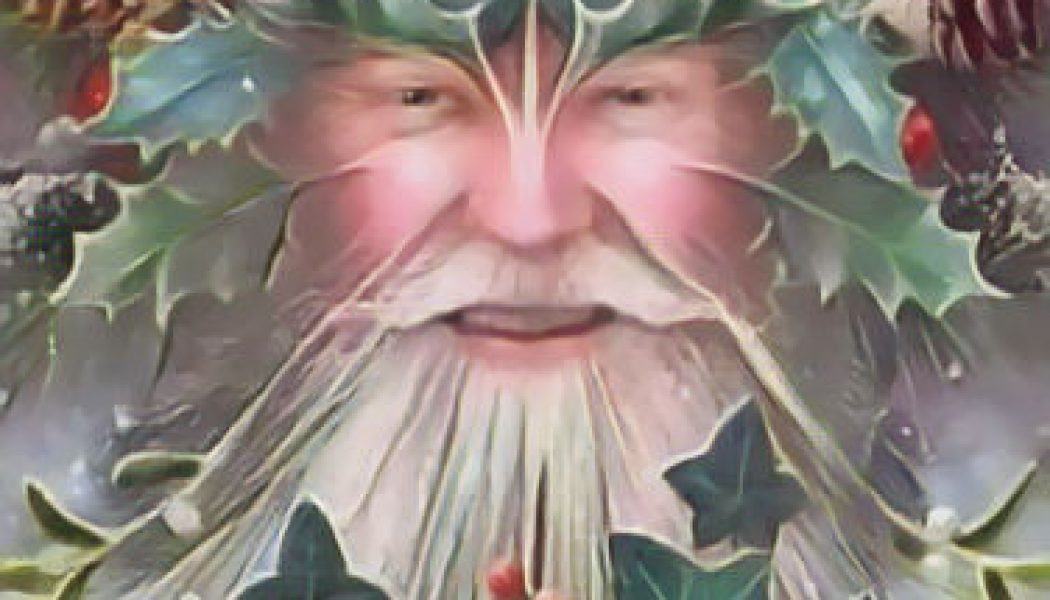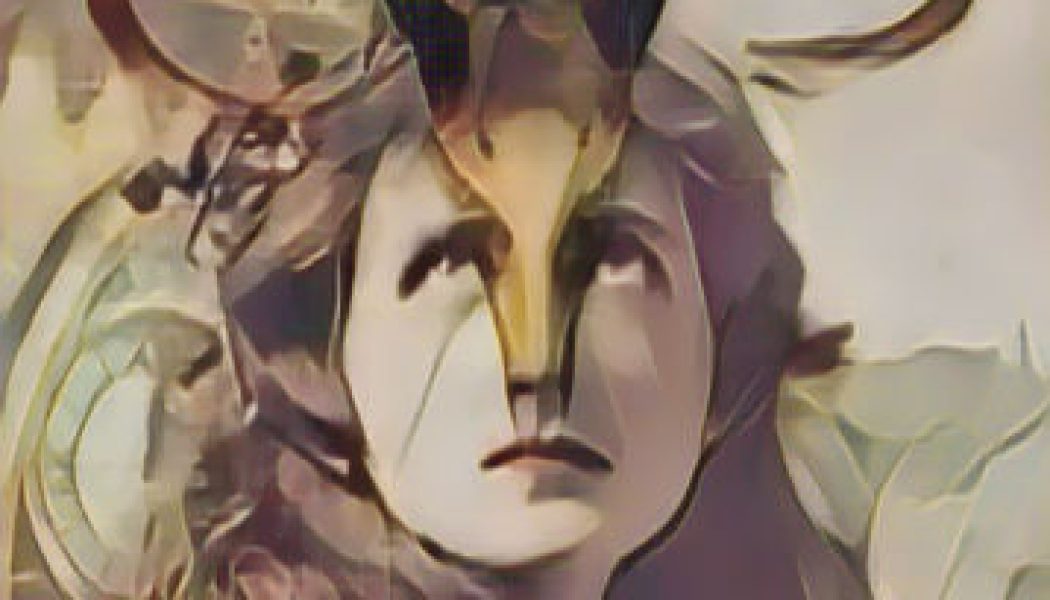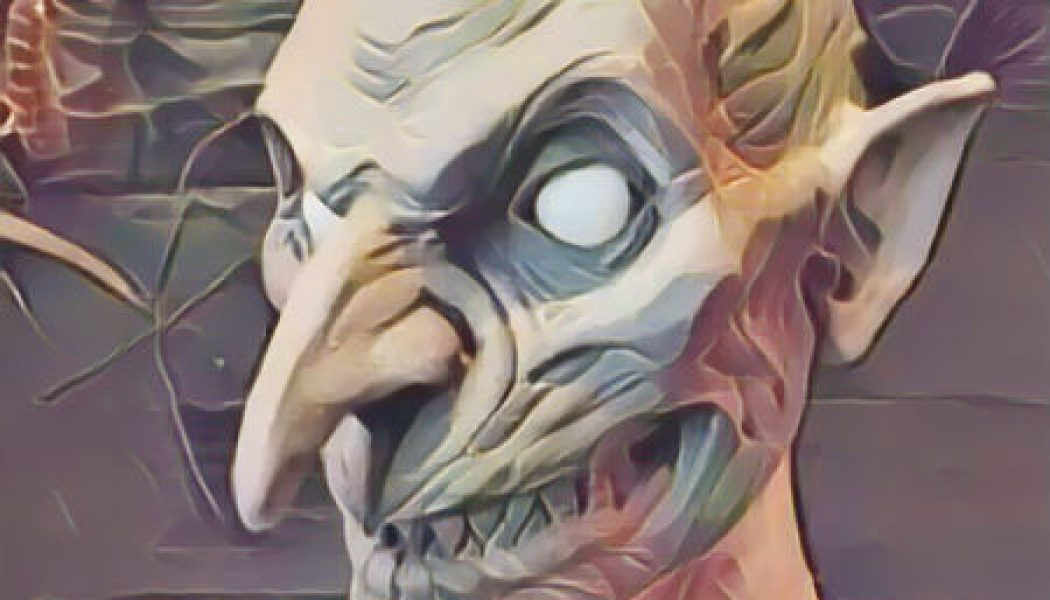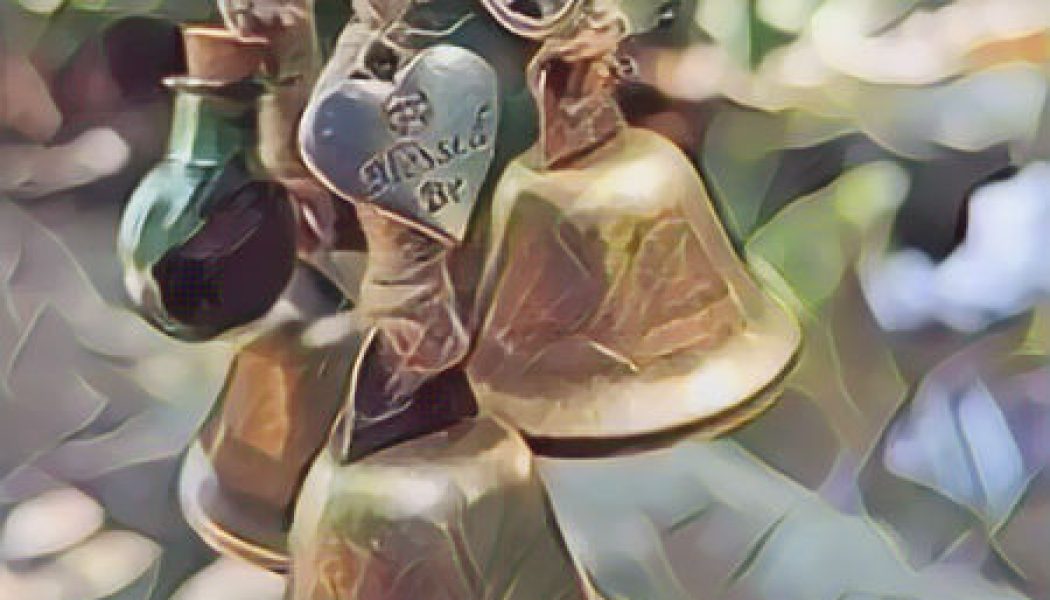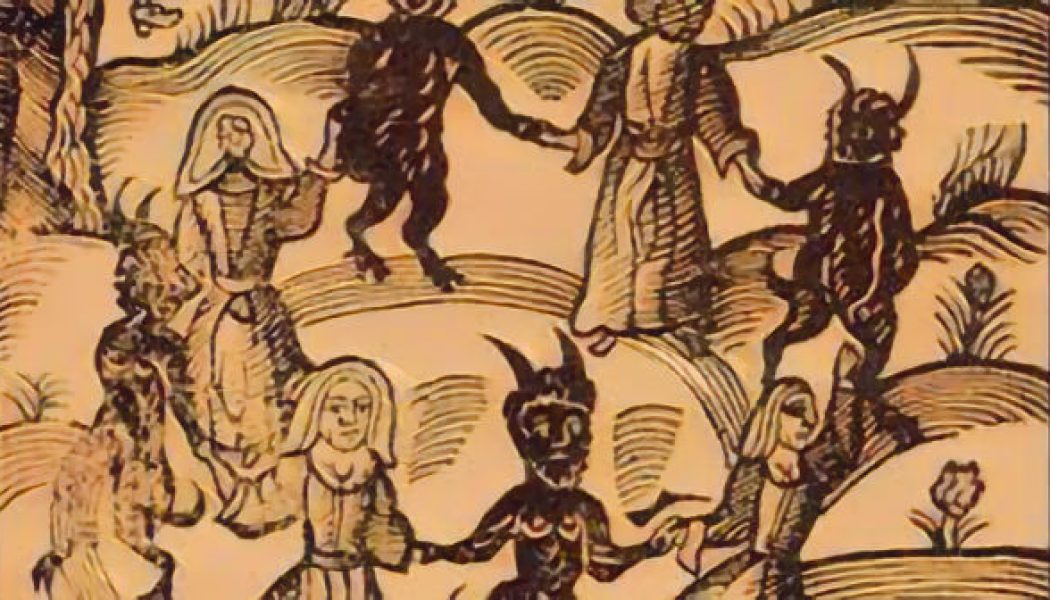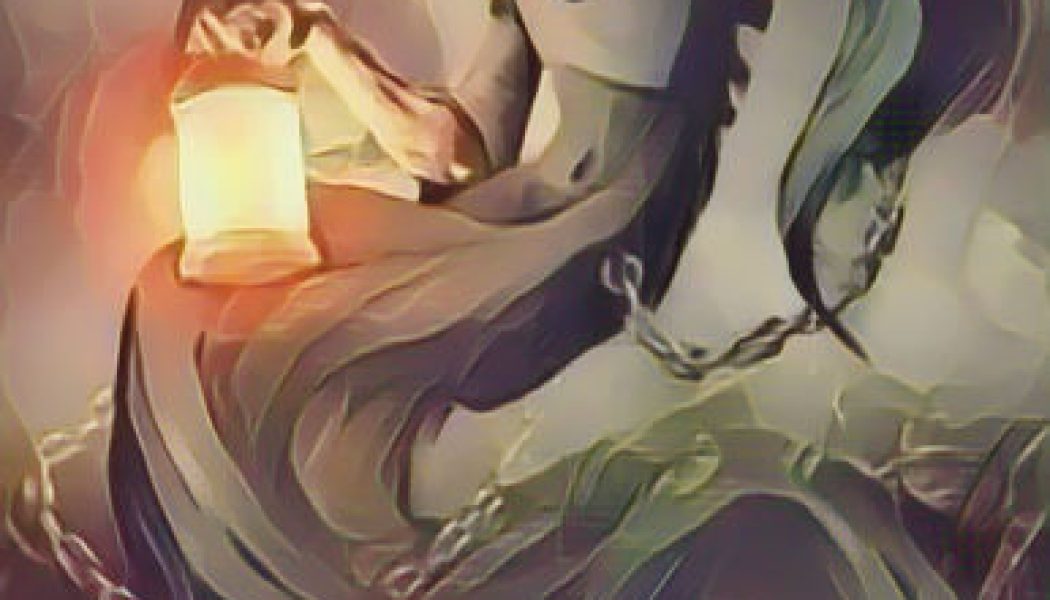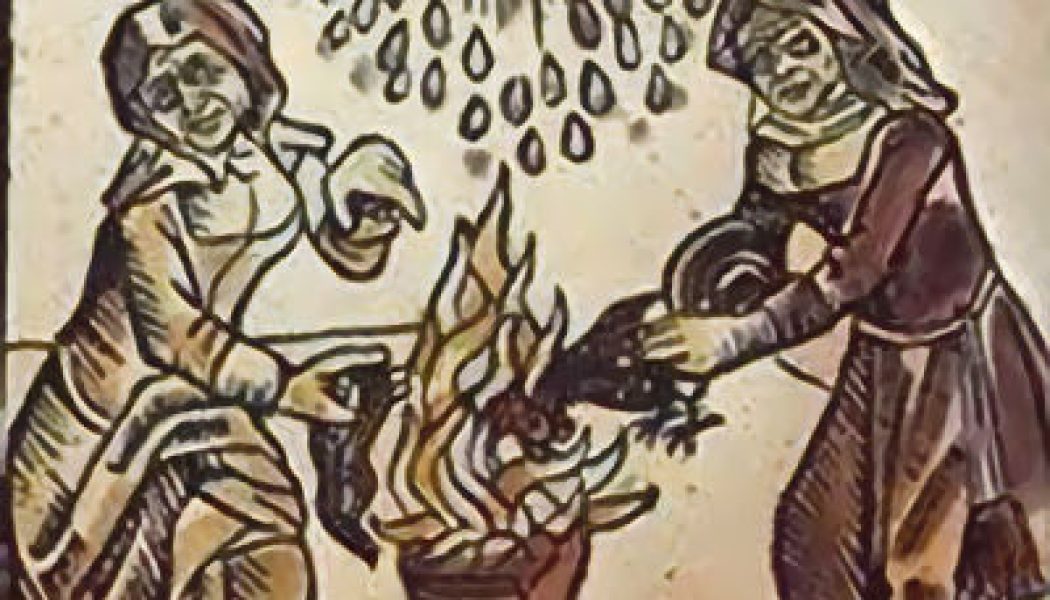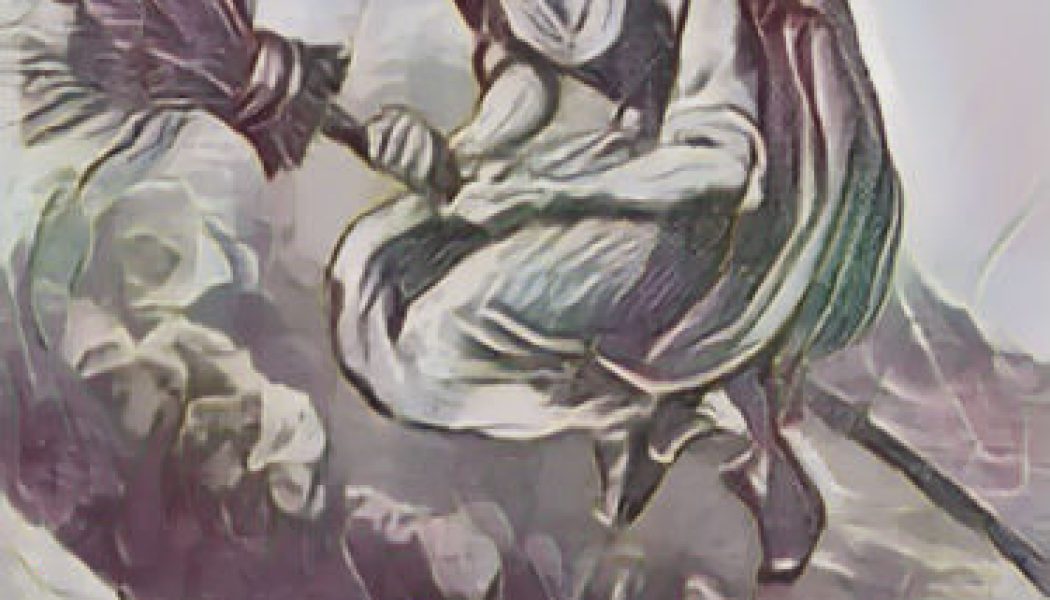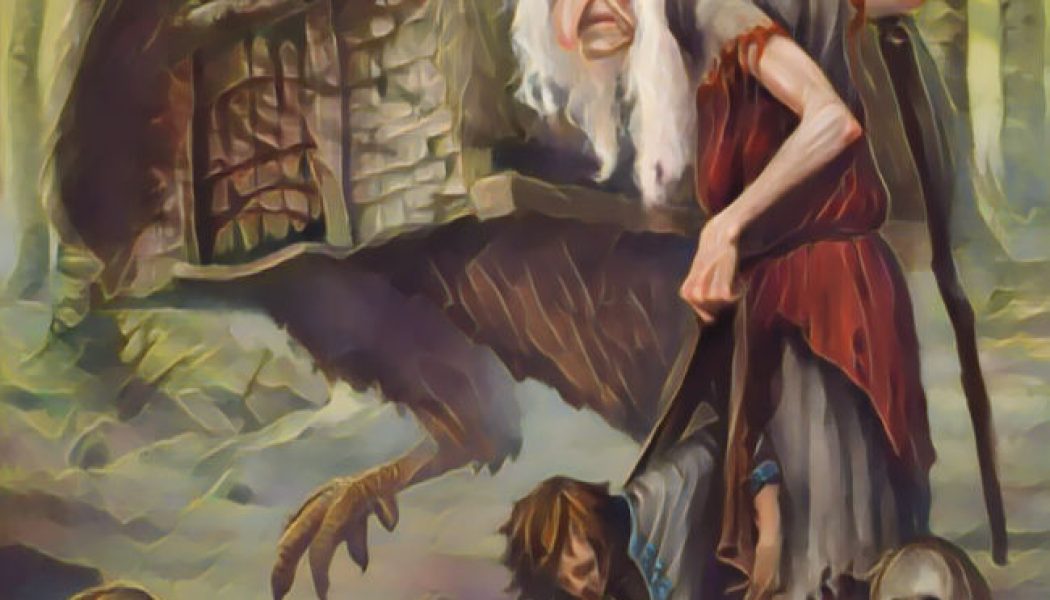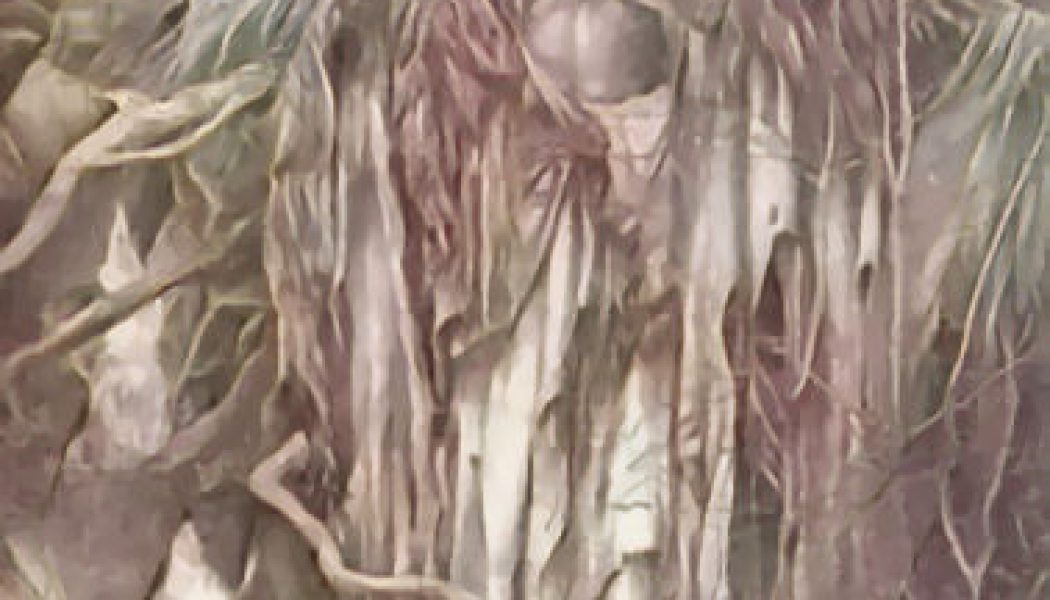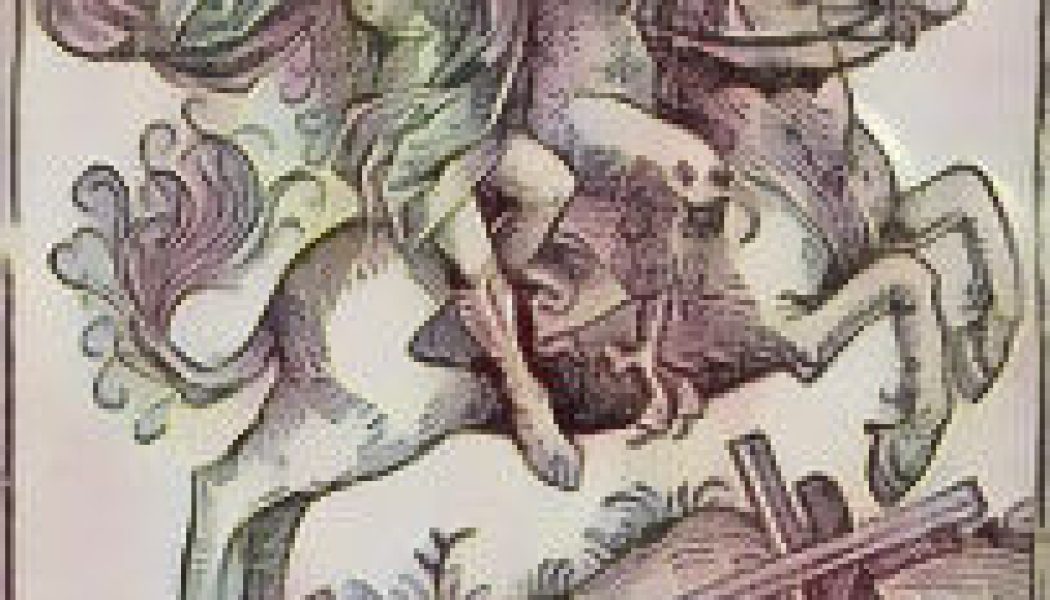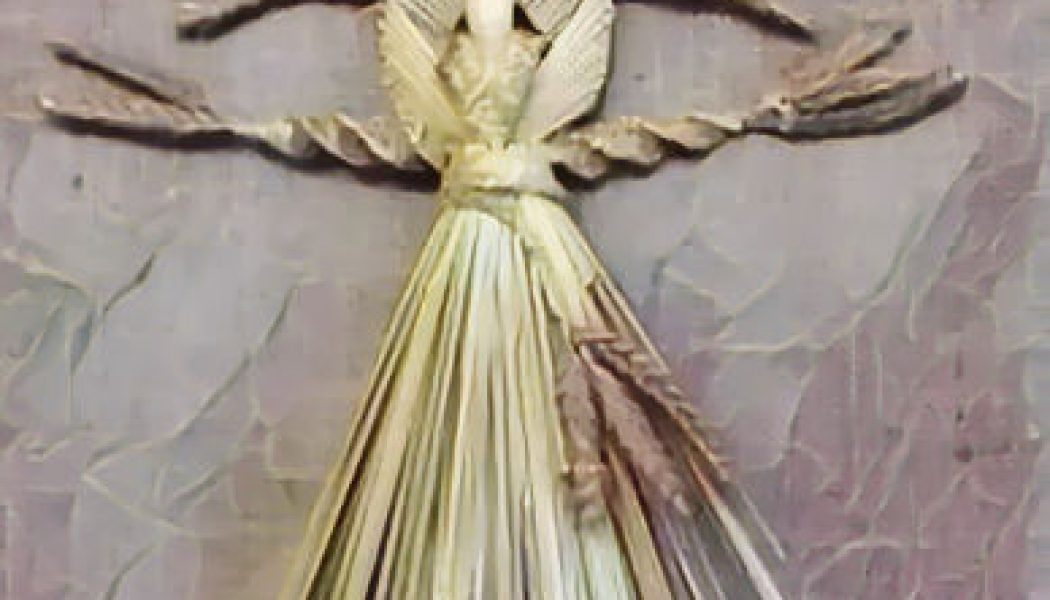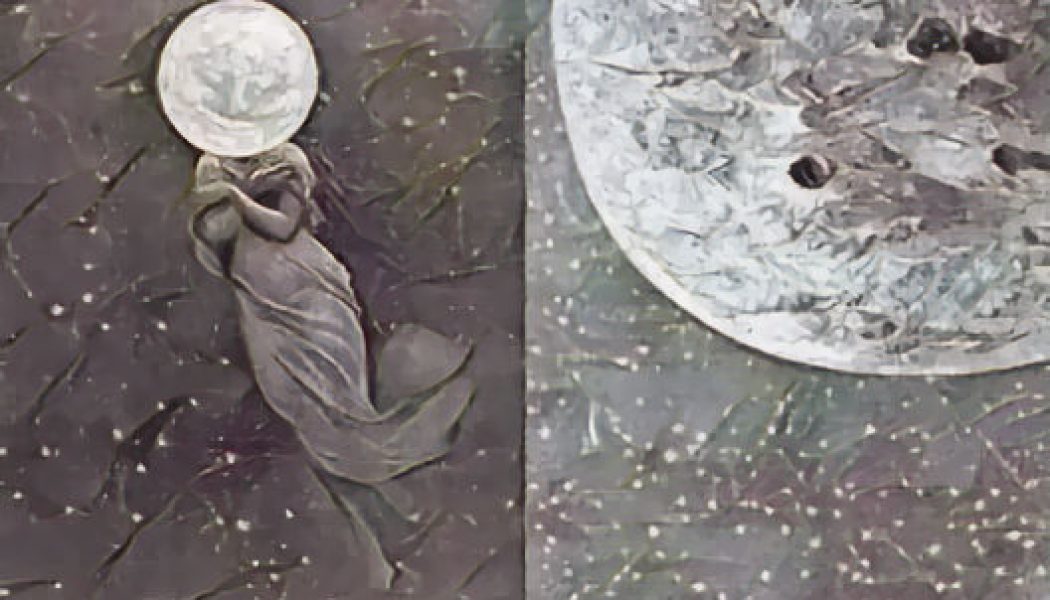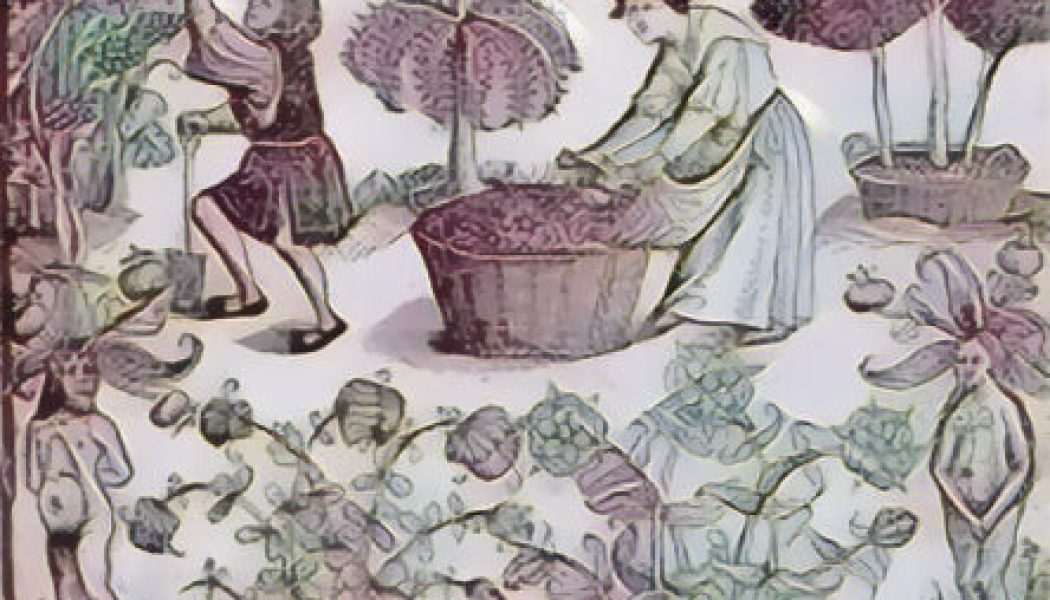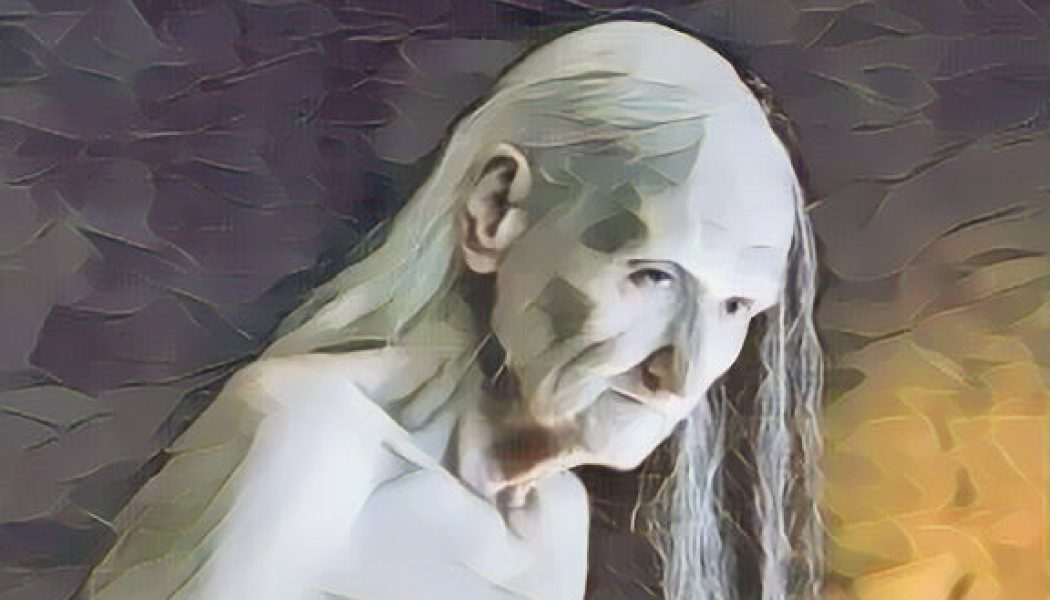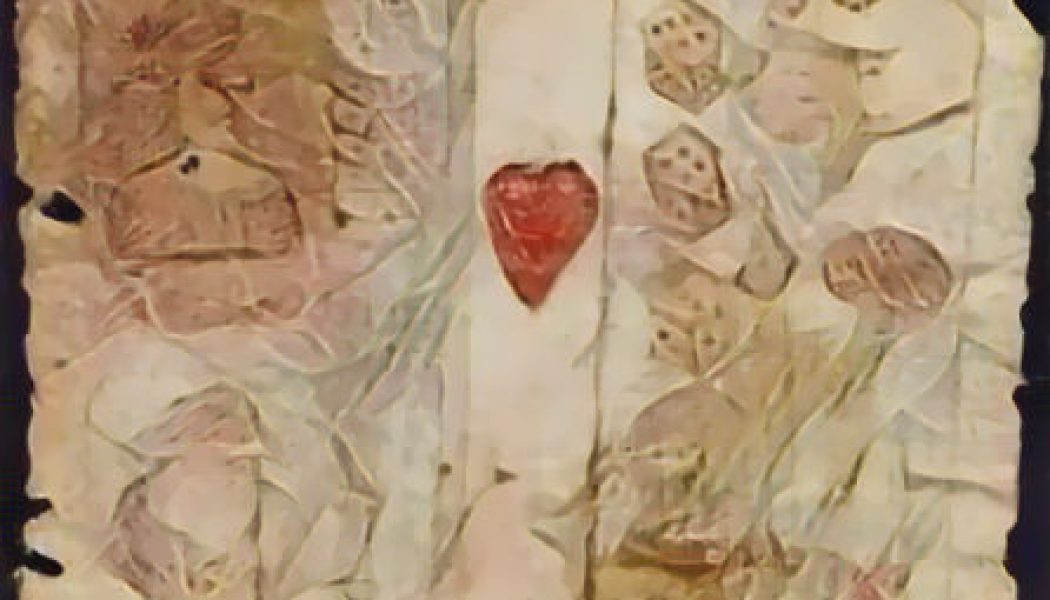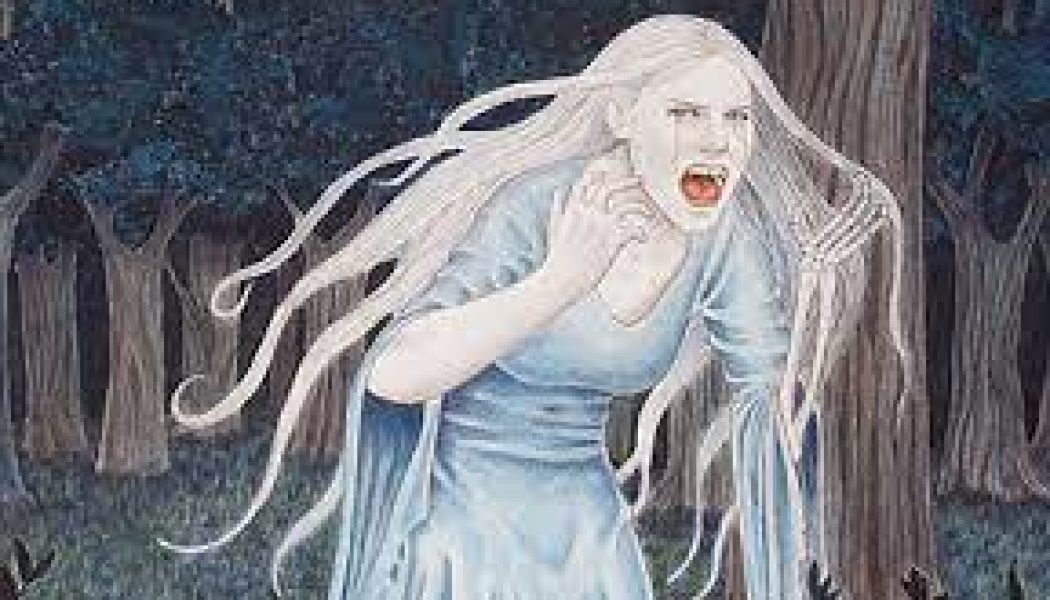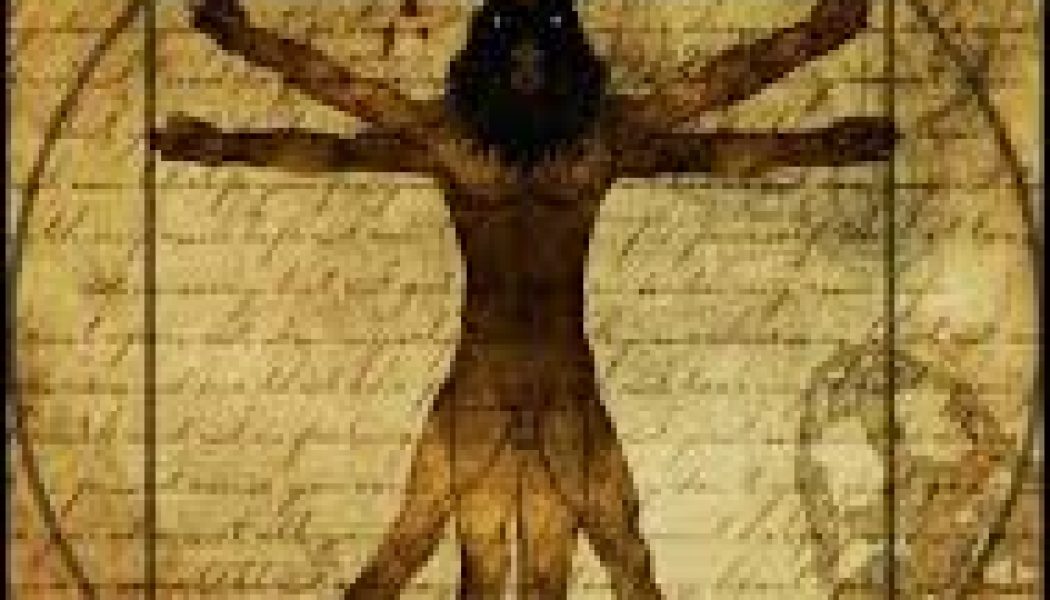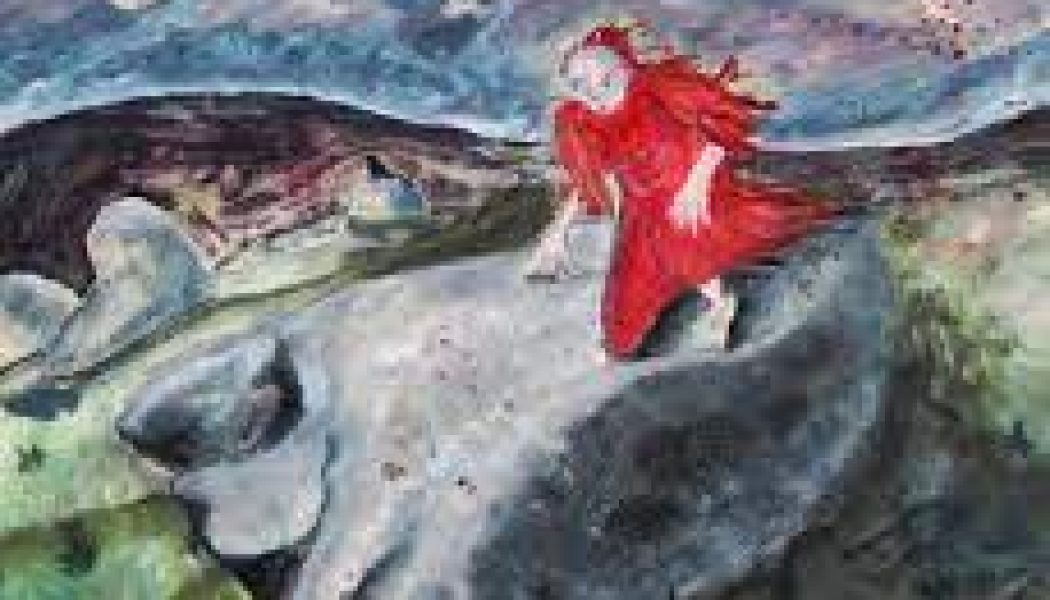Folk Magick
Bellarmine Jugs and their Connection to Witchcraft1
Bellarmine jugs, bottles, and drinking mugs were produced by the potteries of the Rhineland area, from the sixteenth century onwards. They were exported in large numbers to this country, where they be...
Bellarmine Jugs and their Connection to Witchcraft2
When used as a witch-bottle, these vessels have been found with highly unpleasant contents, such as human hair entangled with sharp nails, cuttings of human finger-nails, a piece of cloth in the shape...
Bellarmine Jugs and their Connection to Witchcraft3
Believing that a magical link existed between the witch and themselves, they tried to put the magic into reverse, and turn it back upon the sender. They used their own hair, nail-clippings, urine, etc...
Bellarmine Jugs and their Connection to Witchcraft4
In Christian times, sculptors tried to work it into Church decorations by calling it a symbol of the Holy Trinity; but in the sixteenth century, it was banned by the Council of Trent, who declared it ...
Benandanti 1
Participants in the lingering remnants of an ancient agrarian cult in northern Italy, which came to the attention of the Inquisition in the late 16th century because of the cult’s nocturnal battles wi...
Benandanti 2 The Unknown Origans
The origins of the benandanti cult are unknown; the roots are probably ancient. The leaving of the body and doing battle in spirit, in the guise of animals, is shamanic in nature. The benandanti may b...
Benandanti 3 The Church
The benandanti came to the attention of the church in 1575, when a priest in Brazzano heard rumors of a man in Civdale, Paolo Gasparutto, who could cure bewitched persons and who “roamed about at nigh...
Lucius Apuleius1
Lucius Apuleius is best known to us as the author of The Golden Ass, one of the most famous romances in the world, containing as it does the story of Cupid and Psyche. His importance to the study of w...
Lucius Apuleius2 The Golden Ass
His book The Golden Ass was translated into English by William Adlington in 1 566 (Simpkin Marshall, London, 1 930 and AMS Press, New York, 1 893), and in our own day by Robert Graves in 1 950. It pre...
Lucius Apuleius3 The witches in The Golden Ass
The witches in The Golden Ass have many of the characteristics attributed to those of the Middle Ages. They can change their shape by means of magic unguents; they steal parts from corpses to use in t...
Herbal Folklore & Old Fashioned Tips, Thyme.
Herbal Folklore & Old Fashioned Tips, Thyme. Burning thyme gets rid of insects in your house. A bed of thyme was thought to be a home for fairies.
Herbal Folklore & Old Fashioned Tips, Tarragon.
Herbal Folklore & Old Fashioned Tips, Tarragon. Put in shoes before long walking trips to give strength. It has been used to relieve toothache and as an antifungal.
Herbal Folklore & Old Fashioned Tips, Summer Savory.
Herbal Folklore & Old Fashioned Tips, Summer Savory. It was believed to be an aphrodisiac. Some thought it was a cure for deafness.
Herbal Folklore & Old Fashioned Tips, Sage.
Herbal Folklore & Old Fashioned Tips, Sage. Thought to promote strength and longevity and believed to cure warts. American Indians used it as a toothbrush.
Herbal Folklore & Old Fashioned Tips, Rosemary
Herbal Folklore & Old Fashioned Tips, Rosemary. Rosemary in your hair will improve your memory. It will protect you from evil spirits if you put a sprig under your pillow.
Herbal Folklore & Old Fashioned Tips, Mint.
Herbal Folklore & Old Fashioned Tips, Mint. It was believed to cure hiccups and counteract sea-serpent stings. The Romans wore peppermint wreaths on their heads. It was added to bathwater for its ...
Herbal Folklore & Old Fashioned Tips, Parsley
Herbal Folklore & Old Fashioned Tips, Parsley. Used for wreaths and in funeral ceremonies. Believed to repel head lice and attract rabbits.
Herbal Folklore & Old Fashioned Tips, Oregano.
Herbal Folklore & Old Fashioned Tips, Oregano. Used for “sour humours” that plagued old farmers. Also used for scorpion and spider bites.
Herbal Folklore & Old Fashioned Tips, Marjoram
Herbal Folklore & Old Fashioned Tips, Marjoram. The Greeks believed it could revive the spirits of anyone who inhaled it. At weddings wreaths and garlands were made of marjoram.
Herbal Folklore & Old Fashioned Tips, Lovage
Herbal Folklore & Old Fashioned Tips, Lovage. Chewing on a piece of the dried root will keep you awake. Lovage warms a cold stomach and help digestion. Added to bathwater, it was believed to relie...
Herbal Folklore & Old Fashioned Tips, Garlic
Herbal Folklore & Old Fashioned Tips, Garlic. It was thought to give strength and courage. Aristotle noted garlic’s use as a guard against the fear of water. It’s also been widely used against evi...
Herbal Folklore & Old Fashioned Tips, Dill
Herbal Folklore & Old Fashioned Tips, Dill. Romans made wreaths and garlands out of dill. Dill keeps evil away.
Herbal Folklore & Old Fashioned Tips, Chives
Herbal Folklore & Old Fashioned Tips, Chives. Bunches of chives hung in your home were used to drive away diseases and evil.
Herbal Folklore & Old Fashioned Tips, Fennel
Herbal Folklore & Old Fashioned Tips, Fennel. Bunches of fennel were used to drive off evil. It was used in love potions and as an appetite suppressant.
Herbal Folklore & Old Fashioned Tips, Chervil
Herbal Folklore & Old Fashioned Tips, Chervil. Eating a whole plant would cure hiccups; chervil was said to warm old and cold stomachs.
Herbal Folklore & Old Fashioned Tips Caraway
Herbal Folklore & Old Fashioned Tips Caraway Caraway was used to scent perfumes and soaps. The Greeks used it for upset stomachs.
Herbal Folklore & Old Fashioned Tips Borage
Herbal Folklore & Old Fashioned Tips Borage The Romans believed the herb to be an antidepressant, and ancient Celtic warriors took it for courage.
Herbal Folklore & Old Fashioned Tips Basil
Herbal Folklore & Old Fashioned Tips Basil Precious to lovers in Italy and considered sacred in India. Many years ago, Italian men wore a sprig of basil to indicate their intended marriage. A cup ...
Herbal Folklore & Old Fashioned Tips Anise
Herbal Folklore & Old Fashioned Tips Anise Romans paid taxes with anise, and it was used in cough drops.
Folk Medicine and Remedies Tips to Boost your Immune System
Folk Medicine and Remedies Tips to Boost your Immune System Eat Garlic (preferably in food, not raw) Get your 5 fruits and vegetables a day Eat Bell Peppers Use Turmeric, Echinacea, Elderberry or Gins...
Folk Medicine and Remedies Heartburn and reflux
Folk Medicine and Remedies Heartburn and reflux A handful of Almonds may help against heartburn and reflux.
Folk Medicine and Remedies Warts
Folk Medicine and Remedies Warts Add tea tree-oil to the warts every day and they will soon go away. The juice of a Houseleek is said to remove warts.
Folk Medicine and Remedies Toothache
Folk Medicine and Remedies Toothache If you have a toothache, you can lessen the pain by rubbing Clove essential oil on your gums.
Folk Medicine and Remedies Sore throat
Folk Medicine and Remedies Sore throat 1-2 cups of Fenugreek tea a day. 2 tbsp of Fenugreek powder to 1⁄4 l (~8.5 fl oz) of boiling water, drink it after it’s cooled (you should avoid hot drinks when ...
Folk Medicine and Remedies Insomnia
Folk Medicine and Remedies Insomnia A small bag of Hops under the pillow is said to help against insomnia.
Folk Medicine and Remedies Motion sickness
Folk Medicine and Remedies Motion sickness 1 drop of Peppermint essential oil is mixed with 1 tsp of Honey in a cup. Add some hot water and stir well. Drink slowly half an hour before going on a trip....
Folk Medicine and Remedies Nausea
Folk Medicine and Remedies Nausea Mix 1⁄4 tsp of ground Ginger in 1 glass of water and drink it. The nausea usually subsides after 10-15 minutes.
Folk Medicine and Remedies Hickups
Folk Medicine and Remedies Hickups Eat a teaspoon of raspberry jam.
Folk Medicine and Remedies Bug Bites
Folk Medicine and Remedies Bug Bites Hyssop oil or lotion Lavender oil Marigold ointment Bandage with plantain Put fresh leaves of lemon balm or sage on the bite Try a slice of onion. Rub the bite wit...
Folk Medicine and Remedies Coughing
Folk Medicine and Remedies Coughing Cut an onion into segments and put it in a bowl of water – almost cover it with water. Place the bowl in the bedroom.
Folk Medicine and Remedies Stuffed nose
Folk Medicine and Remedies Stuffed nose Essential oils, especially pine needle, sage and eucalyptus oil may help. Drip a couple of drops on a cloth and sniff. Take the lid off a jar of honey and breat...
Folk Medicine and Remedies Hoarseness
Folk Medicine and Remedies Hoarseness Cold wraps around the neck. Small Burnet drops- put some drops on a piece of sugar and suck it. Repeat 3 times a day. Carrots and honey- boil 4 carrots until they...
Folk Medicine and Remedies Cold Prevention
Folk Medicine and Remedies Cold Prevention Echinacea is good as a preventative and when you start to get sick. To prevent a cold you can take 30 drops a day for week, stop for a week and then repeat i...
Folk Medicine and Remedies Colds – bronchitis
Colds – bronchitis If you have mucus in your chest or bronchitis, two cups of Hyssop tea (hyssopus officinalis) a day may be beneficial. 3 tsp of Hyssop (dried) is left to sit in 1⁄4 l (~8.5 fl oz) of...
Folk Medicine and Remedies Children’s colds
Children’s colds Warm some water and add a couple of drops of Eucalypt oil. Place the bowl at the side of the child’s bed, it will ease breathing and loosen a stuffed nose. Small children can get rid ...
Folk Medicine and Remedies Colds – Misc tips
Colds – Misc tips Keep your throat moist. Drink at least 10 glasses of water and do 4 steam baths a day if you can. Heather is good to breathe in when you have a cold. It’s also good for coughing and ...
Folk Medicine and Remedies Eczema
Eczema Chop Dandelion leaves and flowers and make a poultice which is put on the skin. You can also use the decoction and rub it directly on the skin. Repeat the treatment every other day. Fill a bott...
Folk Medicine and Remedies Diarrhea
Diarrhea Boil Carrots to a mush (can be given to young and old). Eat 1 tsp dry cinnamon, it may ease nausea and diarrhea (take it with a glass of water). Eat dried blueberries or drink a concentrated ...
Folk Medicine and Remedies Bad breath
Bad breath Against bad breath it’s recommended to chew fresh leaves of mint or parsley. It also helps to chew on fresh or dried seeds from cumin, caraway, fennel, lovage or fenugreek. Try chewing 2-3 ...
Folk Medicine and Remedies Cellulite
Cellulite Cellulite is fat tissue on the thighs, bottom and upper arms, and it’s a problem many women have. Many say that it helps to massage the skin daily with a hemp cloth. You can do it in the sho...
Folk Medicine and Remedies Cystorrhea
Cystorrhea You get the best chance that this advice will work if you start at the moment the symptoms are noticed. If the problem continues, contact your physician. Cystorrhea is an infection and ca...
Folk Medicine and Remedies Soothing
Soothing Warm chamomile tea, lemon balm tea and lavender tea is soothing. You can buy these as pure herbs at a health food store of a drug store and mix your own tea, either with all three or the one ...
Folk Medicine and Remedies High blood pressure
Note! What ever you try of remedies, never stop using blood pressure medication without asking your doctor first. Make sure you go on regular check-ups, whether you take medication or not. Other gen...
Folk Medicine and Remedies Stuffed nose
Folk Medicine and Remedies Stuffed nose Mix a few drops of Eucalyptus oil with clean water in a small spray bottle, spray it on your sweater or your scarf. Sniff it in. It opens the nose. For small ch...
Folk Medicine and Remedies Sinus infection
Folk Medicine and Remedies Sinus infection Boil 1 1⁄2 liter (~0.4 gallons) of water with 1 tsp of salt, let it cool and sniff it into your nose.
Folk Medicine and Remedies Pollen allergy
Folk Medicine and Remedies Pollen allergy Honey is said to prevent hay-fever. A tablespoon for each meal all through winter is a supplement full of vitamins and minerals and might help reduce the alle...
Folk Medicine and Remedies Increase lactation
Folk Medicine and Remedies Increase lactation Pour 1⁄4 l (~8.5 fl oz) of boiling water over a mixture of 1 tsp of anise, 1 tsp of fennel and 1 tsp of caraway. Let this steep for about 10 minutes, and ...
Folk Medicine and Remedies Blood circulation
Folk Medicine and Remedies Blood circulation Garlic has a beneficial effect on the blood circulation and some say a daily intake of garlic can reduce sclerosis in the veins. Cold feet, varicose veins ...
Folk Medicine and Remedies Hangover
Folk Medicine and Remedies Hangover Take two tsp of Thyme for one cup of water, boil for 10 minutes and drink the day after. The best advice though is probably to eat properly before and after drinki...
Folk Medicine and Remedies Clogged milk channels
Folk Medicine and Remedies Clogged milk channels If you’re weaning your baby and you’ve got clogged milk channels, and you wish to drive the milk back, this might help: Rub your breasts and armpits wi...
Folk Medicine and Remedies Breast infection
Folk Medicine and Remedies Breast infection Poultices of cabbage leaves have been used for a long time on nursing women with infected breasts. It’s said that the cabbage can pull the infection out, an...
Folk Medicine and Remedies Anemia
Folk Medicine and Remedies Anemia Not all types of ginger ale are made with artificial taste. Some contain real ginger and this spice is said to increase the blood count. Drink a bottle every day for ...
Folk Medicine and Remedies Lemon wrap for a sore throat
Folk Medicine and Remedies Lemon wrap for a sore throat A lemon wrap for the throat can reduce swelling when it’s sore. You slice a lemon and put the slices in a row on a cloth, fold it and put it aro...
Folk Medicine and Remedies If you’ve burnt your self on a nettle
If you’ve burnt your self on a nettle Try to rub some pure lavender oil on it and presto, it doesn’t hurt anymore. Rub the yellow part of a dandelion on the skin where you got burnt. It often grows ne...
Folk Medicine and Remedies Stomach problems
Folk Medicine and Remedies Stomach problems You could have many different stomach problems. Aches, pains, constipation and diarrhea are just some examples. Ginger: When you have indigestion and bellya...
Folk Medicine and Remedies Headache
Folk Medicine and Remedies Headache Is there really anything worse than having a bad headache? To lie there in bed just wanting to chop your head off. That’s not what I would recommend, although it su...
Folk Medicine and Remedies Earache
Earache If you have an earache, you can take a piece of fresh ginger and put it against the ear. Squeeze it a bit, and the juice will ease the pain.
Folk Medicine and Remedies Onion wrap for ear infection
Onion wrap for ear infection Chop a heaped teaspoon of onion, put it in a handkerchief and warm it on a saucepan lid. Place the warm onion pack on the ear and put a small corner behind it. To hold the...
Folk Medicine and Remedies Throat infection
Throat infection Grate a carrot, put it in the middle of a big handkerchief and fold it. Dip a piece of cloth in ice cold water and wring it out. Put the pack on your neck and put the cold piece of cl...
Folk Medicine and Remedies Sunburn
Put a thin layer of cooling and soothing natural yogurt on the part of your skin that’s burnt Let it sit for a couple of hours and then rinse it off with water.
Folk Medicine and Remedies Burns
Burns Egg white is a good thing when you’ve gotten a burn. Smear a layer over the spot and you’ll see that it eases the pain rapidly. It also prevents blistering.
Folk Medicine and Remedies Chafe
Chafe When you’ve gotten a chafe, you can crack a couple of eggs and pick off the membranes closest to the shells. Put these on the chafe and you’ll se that it heals over night.
Folk Medicine and Remedies Prickling in the legs
Prickling in the legs can drive you crazy when you’re trying to go to sleep. One remedy is to eat banana – there’s a lot of potassium in bananas and the prickling sensation can come from a potassium...
MY GRANDFATHER’S CLOCK
MY GRANDFATHER’S CLOCK by Henry Clay Work My grandfather’s clock was too large for the shelf, So it stood ninety years on the floor; It was taller by half than the old man himself, Though ...
Folklorist Belief
FOLKLORISTS MAY BELIEVE THAT the first festivals arose because of the anxieties of early peoples who did not understand the forces of nature and wished to placate them. The people noted the times and ...
Folklore
The majority of people who are new to spell working may at times acknowledge that for them common sense backed up by practical action is normally more productive than theoretical or mystical thinking....
FOLKLORE ON A Stopped Clock
Lets examine the curious and sometimes sinister superstitions that have grown up around clocks over the years, and related how a stopped clock was often related to a death in many folk beliefs. Now th...
The Verdanthrope
In the deep recesses of the forest, a tale whispered by ancient trees and dreaded even by the shadows unfolded. The Verdanthrope — a creature carved from moss, branches, and the dark secrets of the wo...
Spiders in Myth and Folklore
Nearly all cultures have some sort of spider mythology, and folktales about these crawly creatures abound! Hopi (Native American): In the Hopi creation story, Spider Woman is the goddess of the earth....
Wyrd Scrying Spell
You will need the following items for this spell: A wooden bowlA small knife or chiselIncenseCandle wax (optional)WaterBegin by placing the wooden bowl on a flat surface. Take the chisel or knife and ...
The Berkeley Witch
In English folklore, the Berkeley Witch was a wealthy woman who lived during the time of the Norman Conquest in the town of Berkeley in England’s heartland. She was wealthy and well liked, and lived l...
Yuxa, or Yuha (“Sly Snake”), the Queen of Serpents in Turkic folklore.
She manifests in every serpent that is at least 100 years old. She can become a beautiful maiden, and makes an excellent fairy wife. A human husband must never speak of what she really is, or th...
AIR FOLKLORE AND LEGENDS
Air is the element of the East, connected to the soul and the breath of life. If you’re doing a working related to communication, wisdom or the powers of the mind, Air is the element to focus on. Air ...
EARTH FOLKLORE AND LEGENDS
Each of the four cardinal elements – earth, air, fire and water – can be incorporated into magical practice and ritual. Depending on your needs and intent, you may find yourself drawn to o...
Faces of the Holly King
NamesJanicot, Woden, Odin, Gwyn ap Nudd, Arawn, Iuan, Krampus, Hod, Hob, Basajaun, Lucibello, Iu-Hu, Old Nick, Misrule, Pan, Baphomet, Scratch, Puck, Buccos Station of the WheelNorthwest, Yule, Decemb...
Horned Women
In Irish legend, 12 horned women, all witches, who take over the household of a rich woman and bewitch her and her sleeping family. No reason for the bewitching is given in the story—perhaps, in times...
Goblins
In French folklore, wandering sprites who attach themselves to households and both help and plague the residents. Goblins live in grottoes but are attracted to homes that have beautiful children and l...
Bells In Folklore
Bells are Repellers of witches and evil spirits. Bells are associated with the divine: their sound is symbolic of creative power, their shape a symbol of the female force and the celestial vault. The ...
Folklorists, Thoughts & Festivals
Folklorists believe that the first festivals arose because of the anxieties of early peoples who did not understand the forces of nature and wished to placate them. The people noted the times and seas...
Jack-o’-Lantern
A phosphorescent light seen in marsh and swamp areas, which in folklore is either the manifestation of a malicious lost soul or a death omen. Jacko’-lantern is known by various names, including will-o...
Folklore & Spell Work
The majority of people who are new to spell working will acknowledge that for them common sense backed up by practical action is normally more productive than theoretical or mystical thinking. In magi...
Broom Folklore in Rural Cultures
The broom is one of those tools that most people have in their home – whether they’re a witch or not! In many rural cultures, the broom has become a source of legend and folklore. Here are just a few ...
Baba Yaga
In Russian folklore, a female witch who loved to roast and eat people, preferably children. She was as likely to pop a niece in the oven as she was a stranger. She lived in a little hut beyond a river...
Merlin
Merlin was as Archetypal wizard of Arthurian lore. Merlin is a Latinized version of the Welsh Myrddin. His exact origins are lost in myth; he may have been a god, perhaps a version of Mabon or Maponos...
Berkeley Witch
In English folklore, the Berkeley Witch was a wealthy woman who lived during the time of the Norman Conquest in the town of Berkeley in England’s heartland. She was wealthy and well liked, and lived l...
Making a Corn Dolly
To Make a Corn Dolly You Will Need Two small handfuls of corn stalks Green and yellow wool or cotton Trailing greenery (ivy or grape vine are ideal) Appropriately colored ribbons for the ritual (red o...
Lunar Folklore
If the Moon is feminine in nature, how did we ever come up with the “man in the Moon?” Even though this idea is often thought of as strictly an American invention, such is not the case. The Sanskrit w...
Befana
Befana is an old woman who delivers gifts to children throughout Italy on Epiphany Eve (the night of January 5). A popular belief is that her name derives from the Feast of Epiphany or in Italian La F...
Folk Magick And Ritual Magick
Whether you are casting a simple spell, using items from your kitchen cupboard, or performing a complicated group ceremony, the source of the power behind it is the same. Every spell or ritual involve...
Apples in Folklore
Apples, cultivated in Britain as early as 3000 b.c.e., have had a long association with magic, witches, and goddesses. Magic apple lands, whose fruit gave eternal life, were cultivated by various West...
Hag
A Hag is an old, ugly woman believed to be a witch or sorceress; also, a supernatural, demonic being whose powers enable her to live an incredibly long time. The origin of the term “hag” is found in t...
Mother Shipton
A 15th-century English witch and seer who supposedly prophesied scientific inventions, new technology, wars and politics through several centuries, all written in crude rhymes. The books of her “proph...
Girdle Measuring
An old technique of magical healing by wise women and men, wizards, and witches involving the measuring of the patient’s girdle or belt. Changes in girth revealed the presence of evil spirits or fairi...
Banshee
It is the duty of the banshee or ‘woman of the fairies’ to foretell the death of an individual. Banshees are attached to particular families and their cry is only heard when a family member is about t...
Shape Shifting
Spells designed to bring about a difference in bodily appearance in order to dissolve mischievous enchantments by the fairy folk or frequenters of the lower world were legion in most cultures. In Celt...
Mother Redcap
A name applied to English ale-wives, wise women and witches. It was also given to familiar animals. One Mother Redcap was an elderly woman who lived in a village about 14 miles from Cambridge, England...
























































































































